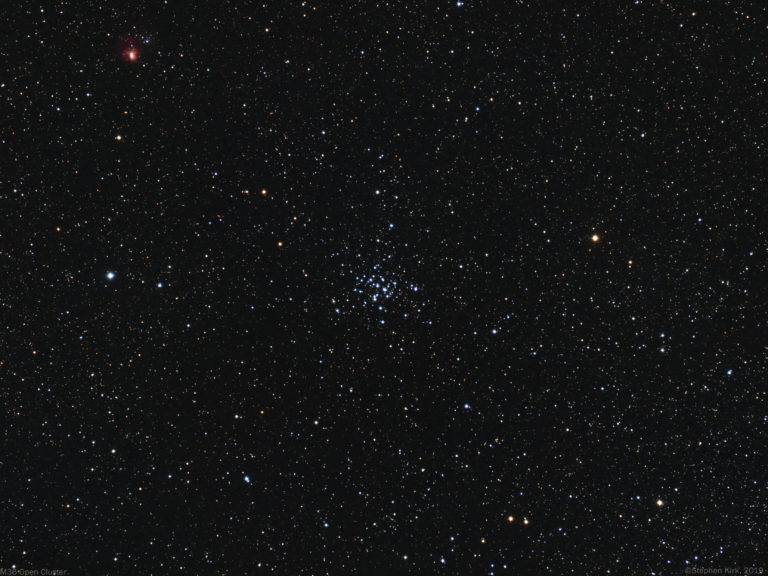Known since ancient times as a nebulous blob in the autumn and winter sky, M31 was the first galaxy to be recognised as a completely independent “island universe”, wholly separate from our own Milky Way galaxy. This nature of M31 was only discovered in 1924.M31 is slightly larger than our own galaxy and is located about 2.2million light years away. M31 – The Great Andromeda Galaxy The abovr image is comprised of a series of 600s exposures taken during 2017 and 2018 and is approximately ten hours worth of data through Baader LRGB and Ha (7nm) filters with a Takahashi FSQ85 telescope at native focal length and with G2-8300 camera. M31 Annotated Version M31 Inverted Version
M36 is an Open Cluster of stars (as opposed to a Globular Cluster) in the Constellation of Auriga. M36 is high overhead in Europe during the nightimes of winter months and is one of three Messier Open Clusters in Auriga, the others being M37 and M38. All of these are visible in a small pair of binoculars as nebulous and fuzzy blobs. M36 and the other clusters make a fine site in a telescope and dozens of stars can be seen. Note also the Red nebula to the top left – NGC 1931 (Sh2-237). There are some tiny PGC catalogue galaxies, billions of light years away in this image. M36 Open Cluster in Auriga This image was taken from by backyard in Nottingham, UK on the 24th January 2018 with my Takahashi FSQ85 refractor and Moravian instruments G21-8300 CCD camera with Astrodon RGB Generation 2 E series filters on MESU…
I have had the scope for three weeks now and have used it three times. That’s good going in the UK in case you possibly thought that’s bad; it’s not uncommon to wait for six weeks for a first light in our cloudy climate! Anyway, leaving aside the usual British moans about our weather……The FSQ is so easy to use. Just point it, focus and forget. I am using Baader LRGB filters in 1.25″ guise in an Atik EFW2 filter wheel. These filters are stated to be parfocal. However, with my Skywatcher ED80 telescope I found they were not. The focus wandered slightly between the filters. I normally focus on the Luminance channel first. I then grab LRGB in that order. But by the time I got to the blue filter I found stars were becoming bloated, not massively – but enough to take the edge off the picture. This…
I bought my Takahashi FSQ-85EDX telescope from Ian King Imaging in November 2013 and bought it with the 0.73 reducer and numerous Takahashi adapters. I have not as yet used it reduced, only at the native F5.3. I am very impressed with the scope so far. It weighs only 4kg but feels so much more than that. The scope is a thing of beauty with impeccable paintwork and build quality. This is truly a scope to last a lifetime if cared for. I went around the mental “shall I buy a 85 or 106” loop a million times. However, I already have a TEC 140 telescope to give me a smaller (or zoomed in) image scale for smaller objects like M81, M87 etc and the Abell galaxy clusters. I felt the FSQ-85 gave me better options for wide-field imaging of large targets like M31, M33, North American Nebula, Rosette Nebula…




